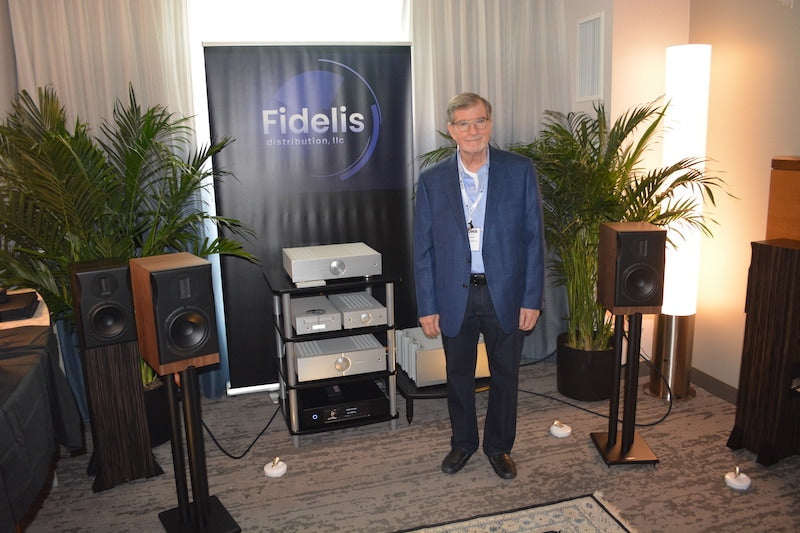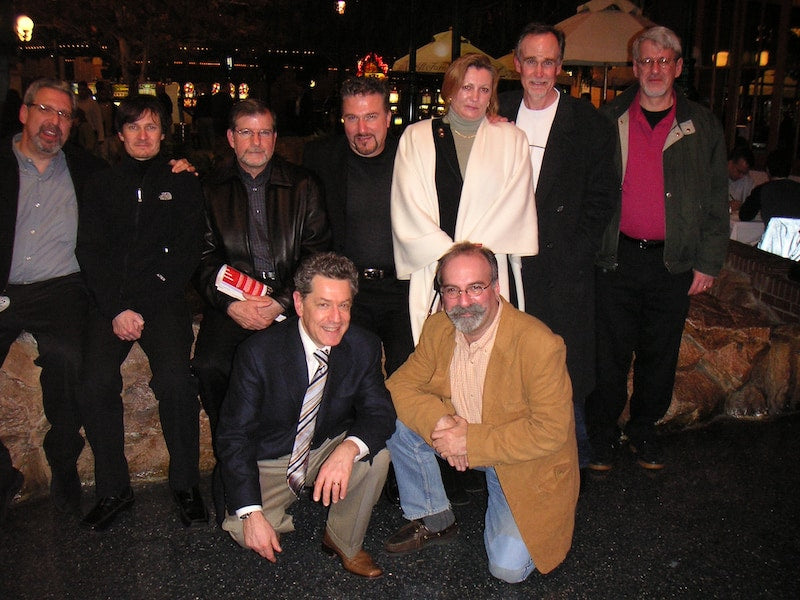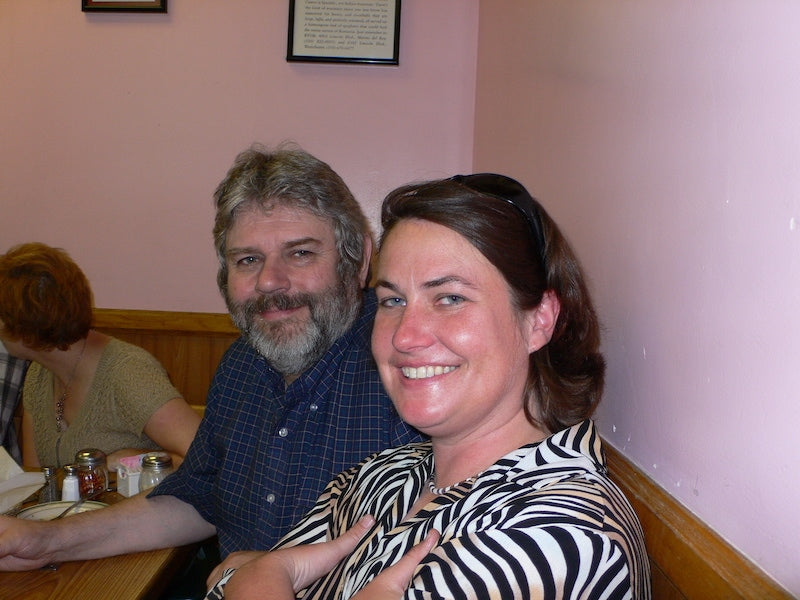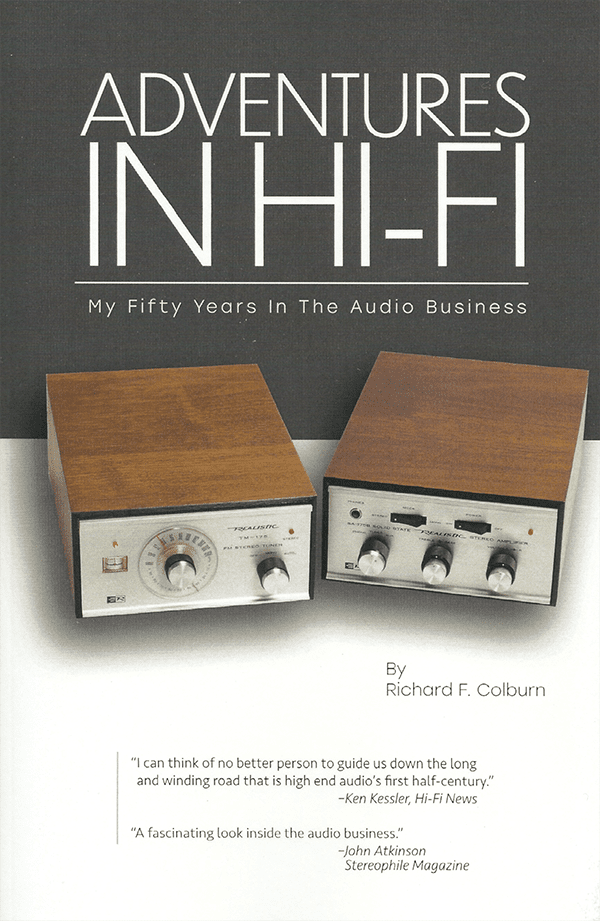In this summer break from his reel-to-reel activities, Ken Kessler discusses an important new book, Richard F. Colburn’s Adventures In Hi-Fi.
Unlike most industries, high-end audio – or, for that matter, hi-fi per se – has been uniquely negligent about its past. We have, for example, no establishments chronicling its history, save for the odd exhibit in science or broadcast museums. While many brands have (belatedly) assembled on-site collections of key models displayed in their factories, e.g., KEF, Audio Research, and a few others, for the most part the manufacturers are as guilty as any.
All you have to do to appreciate this is to see how Porsche, Ferrari, and other automobile companies have honored their legacies. When it comes to watch brands, you would not believe what Omega, Patek Philippe, Jaeger LeCoultre and nearly every other has for representations of their histories. (At this point I should tell you that I am aware of efforts to rectify this in audio, with plans afoot for two hi-fi museums from two manufacturers with collections beyond their own products. However, I don’t want you too be excited, because they are still under embargo and in their earliest stages.)
It’s the same for books about hi-fi. London has entire stores filled with books on motoring. I have 44 feet of shelving for watch brand histories (and it’s by no means comprehensive), and three times that for rock music, which is the reason I got into hi-fi in the first place. Embarrassingly, if not shockingly, my own contribution to the genre of hi-fi books constitutes probably 10 percent of all the available titles – and I have only written four brand sagas and co-curated a paperback history of the high-end.
Naively, I thought that the hugely positive response to my Quad book back in 2003, one of the earliest brand histories and the first to be produced to “coffee table book” production standards, would be followed by a flood of others. I was wrong. Looking at my own hi-fi library, and unable to think of any which I am missing, I have only 35 or so brand histories and another dozen general books. (Note: This does not include technical books, of which there are hundreds, e.g., I have 10 just on tape recording which date from the late 1950s and early 1960s, the same again on speaker design and tube circuitry, and more than a dozen generic “guides to stereo” and the like.)

Richard Colburn at AXPONA 2022. Courtesy of Frank Doris.
I could easily name 50 audio brands which deserve to have their stories told, but this is unlikely ever to happen, and for a number of reasons, not least because the potential sales are too small for mainstream publishers to show any interest. More crucial is the realization that there are too few companies which can afford to produce them in-house and have the inclination to do so, as per books about Wilson Audio, Gryphon, Rega, Quad, KEF, JBL, McIntosh, etc.
An even greater problem is that many of the brands which should have books telling their tales are either defunct, dormant, changed beyond recognition, or have been sold so many times that there are no employees left to fill in the gaps. Far worse is that their archives no longer exist, and scouring through a few thousand issues of yellowing hi-fi magazines requires an independent, properly bankrolled person with stamina, along with the skills to secure rights for reprinting the photos.
If I had a dream list of the histories that I would love to see, it would be Acoustic Research (AR) first of all, as I consider AR to be the most important hi-fi brand ever. It earns that title just for its vast sales in the US in the 1960s, for Edgar Villchur’s game-changing designs, including the three-point suspended subchassis turntable and acoustic suspension speakers, and for the myriad brands it sired, such as EPI and KLH.
Think about the other milestone makers that built this industry. We could do with volumes about H.H. Scott, Fisher, Dynaco, Crown, Marantz (by which I mean something more substantial than the magazine they produced in Japan some years ago), harman-kardon, Empire, Shure, Sennheiser, KLH, and too many others to list. I’d love to see a volume that dealt with the younger brands – perhaps collectively – which kicked off the extreme high-end, such as Phase Linear, Magnepan, Threshold, PS Audio, Theta, SAE, ESS, SOTA, Koetsu, Grace, Fidelity Research, MIT, Burmester, Jadis, Thiel, Apogee, Ohm, Acoustat, Krell, and, of course, Mark Levinson.

KEF 105 loudspeakers, one of the many vintage audio products pictured in the book. Courtesy of Richard Colburn.

B&W DM70 loudspeakers. Courtesy of Richard Colburn.
Heroic efforts, however, have been made by independent authors who – with forensic abilities, the time and wherewithal to undertake the projects, and as much help as they could muster of the remnants of (or current owners of) the brands – have given us titles on Revox, EMT, Thorens, Leak, Ferrograph, Stellavox, and a few others. Having written my four books with full access to the archives of companies which are still in business, as well as the good fortune to interview founders and key employees, I can only bow in admiration to those who are able to chronicle brands which either no longer exist, or which have little connection to their origins.
What does the future hold for researchers and future audiophiles who want to know what went before streaming? I’m not optimistic about anything, especially when I have just learned that in the UK schools want to retitle stories of real-life historical figures Dick Whittington and Dick Turpin because some revisionists think their first names might offend, terrify, and trigger anxiety in students. I kid you not.
Having not yet retired completely, I’ve been in discussions to write at least four more, but thanks to what COVID has done to my willingness to travel, along with old age, I suspect only one of them will see completion. That said, I can at least declare, as one who has been harping on this topic for decades, that I have put my money where my mouth is when it comes to hi-fi’s history.
What has gone some way in rectifying the dearth of hi-fi history is what I think may be only the second autobiographical volume written by an individual who has spent a half-century in high-end audio, thus following Paul McGowan’s salty tome, 99% True. But full disclosure comes first: I have known the author since the time before either of us moved from being music-loving enthusiasts to full employment in the audio industry, there’s a quote of mine is on the cover, and I appear in the book as one of its characters. Take that as bias if you must, but please don’t let it stop you from heading over to amazon.com as soon as you can to buy a copy of Richard F. Colburn’s Adventures In Hi-Fi – My Fifty Years In the Audio Business.
Rich and I first met in 1970, when we were students at the University of Maine in Orono, which is as far from civilization as one can get. Think Animal House, with a campus dominated by guys who still dressed like Wally Cleaver, circa 1958, while Rich and I were pot-smokin’ hippies who met in classes where we studied Greek Theater, just because the professor could have been a moonlighting Terry-Thomas. We found instant chemistry, and attended many a concert together, as recounted in the book.
After Rich graduated and I emigrated to the UK, we lost touch in those days before social media. I had stayed in contact with a mutual friend, Fred Jeffery, because he lived in my home town of Portland, Maine, but neither of us knew where Rich was, or what he was doing. Without spoiling how we met up in the world of hi-fi – again, long before social media and Facebook in particular helped re-establish friendships – suffice it to say that we have seen each other at every CES since (until 2018, that is), along with shows in LA, New York, Denver, and Munich.
But that’s enough about me. Rich has produced a superb read which, although much is best digested by those in the industry, provides a personal, detailed wander through a half-century of high-end audio. Over the decades, Rich has worked for a number of brands and distributors, Nakamichi being the company that reunited us. He has attended more shows than he can count, and has a memory which I envy, as I cannot match his recollections unless provided with photos.
Rich tells the story through retailers, brands, shows, and – to the delight of hard-core enthusiasts – specific products, many of which are lost in the mists of time. The book is profusely illustrated, so you can imagine the delight in seeing photos of the Dunlap-Clarke Dreadnought 1000 and the Mark Levinson HQD speaker system on a paper page rather than via a Google search. If there is anything to criticize, it is the lack of an index, but that’s not terminal. I read this in one sitting. What I can only add to it at this stage are a few more photos to help illustrate the one element of the book with which I was deeply involved. And it even includes editor Doris.

Celestion Ditton 66 speakers. Courtesy of Richard Colburn.

Rich’s spare time, spare room, mostly-vintage audio system. Courtesy of Richard Colburn.
My pact made with Rich when we met some 15 years after last seeing each other was this: on the night before every hi-fi show at which we were both present, we would have dinner. It swiftly evolved into an unofficial event which at one point might have numbered over 25 people. (Like I said, Rich’s memory is better than mine.) In addition to assorted restaurants in Las Vegas, usually Thai or Chinese, we also dined in Denver, and I recall Stereophile shows in New York being preceded by gatherings at the Carnegie or Stage Delis.
As Rich writes, the rules were simple: anyone talking about their products would have to pick up the entire tab. Although other scribes came and went, the only journalists present on a regular basis were Michael Fremer, Frank Doris, and me, so the Colburn-Kessler Pre-CES Blow-Outs stayed pretty much sotto voce. But not sotto enough because when word did leak out, some undesirables wanted to join the festivities. As I organized this with Rich, we ran it like the snootiest private club in London, only without membership fees.

CES 2005 dinner at Chin Chin. Back row (L – R): Aragon’s Paul Rosenberg, Keith Tonge of PMC, Rich, David V Day, Heike Becker of AudioValve, Joe Harley of AudioQuest, and Frank Doris, with Michael Fremer and me at the front, on our knees like all good journalists. Courtesy of Ken Kessler.

CES 2005 at Chin Chin: (L – R) David V. Day, KK, Rich, and Joe Harley. Courtesy of Ken Kessler.

Stereophile’s John Atkinson and EveAnna Manley (Manley Laboratories) at the 2006 CES dinner. Courtesy of Ken Kessler.
Over the decades, faces came and went, some no longer with us like my dear friend Paul Rosenberg, of Aragon. Certain incidents remain in my memory, especially the time when EveAnna Manley of Manley tube amp fame insisted on having a photograph taken of her throwing wads of cash at John Atkinson and me. God forbid it should end up on Instagram.
Crises? There were a few, like Steve Guttenberg joining us at one of the NYC delis, only to announce that he was vegan. This caused a minor furor as the other rule was that the bill was split evenly among all who attended, and I think Steve had maybe one half-sour pickle. Or when Rich and I went to the wrong restaurant in Las Vegas – we didn’t know they had two premises – and 20 people were waiting for us to arrive at the correct address. Or turning up at one of the NYC delis to find it cordoned off by the police because of a murder.
Josh Bizar of MoFi, David V. Day of Day-Sequerra, AudioValve’s Heike Becker, Dave Chesky (also a vegetarian in a deli…), Copper’s Roy Hall, Jay Jay French at the final dinner in 2019, Besflores and Leland and so many others over the decades – I fear I am leaving out too many, so I suggest you read Rich’s book. Like I said, his memory is better than mine.


